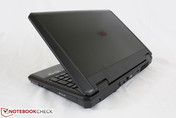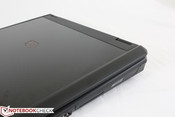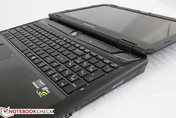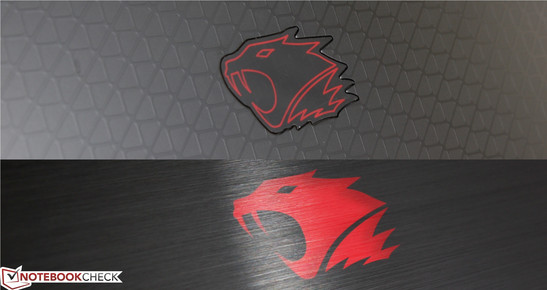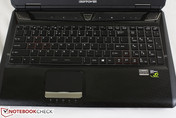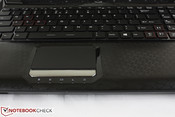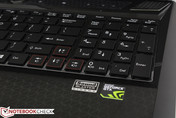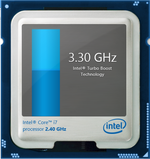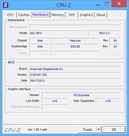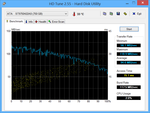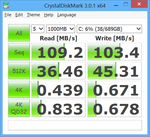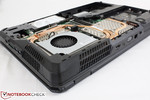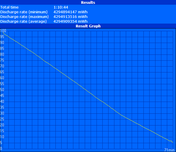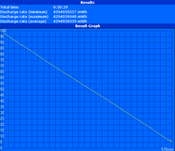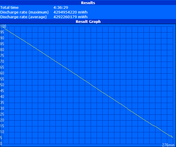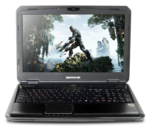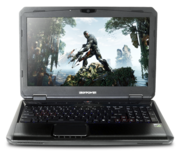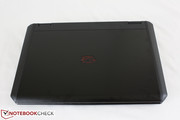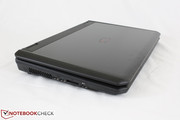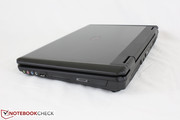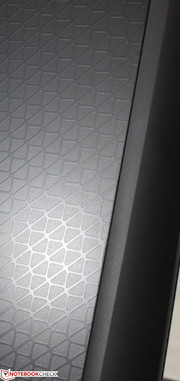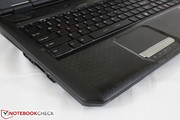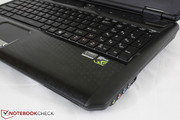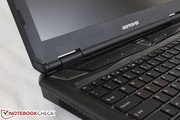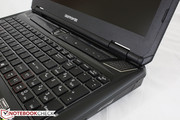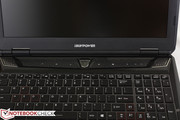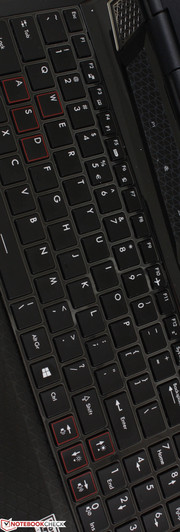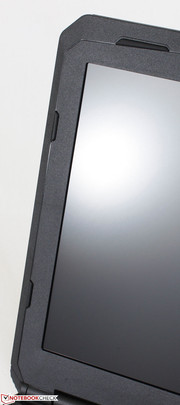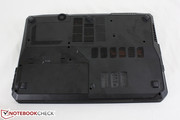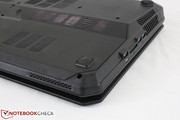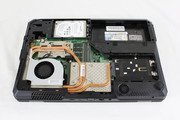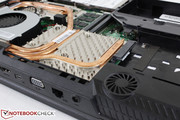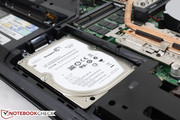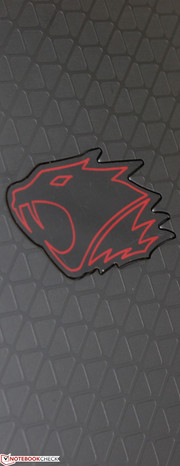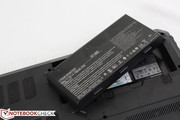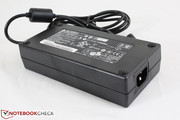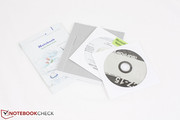Review iBuyPower Valkyrie CZ-15 Notebook

We had a chance to play with the Valkyrie CZ-17 not too long ago and absolutely loved it. Prior to the launch of the GTX 780M, the 17.3-inch model was a great buy at the time for those wanting both an SSD and GTX 680M GPU for a reasonable price without going the barebones route.
iBuyPower is aiming for another homerun with its newer 15.6-inch model appropriately named Valkyrie CZ-15. The chassis is once again an MSI shell most similar in shape and style to the MSI GX60 and GT60, both of which we reviewed in detail in 2012. As such, more information on the case, connectivity and input devices can be seen in said reviews as these are essentially identical. This lets us jump right into performance so we can see how well its internals hold up against competing models with similar specifications.
Valkyrie CZ-15 models can be equipped with up to a Core i7-4930MX, GTX 780M and 32 GB of RAM with plenty of other internal customization options. Our model in review is a bit more reserved with “only” a Core i7-4700MQ, GTX 770M, 8 GB RAM and a 750 GB Seagate HDD for no less than $1300. Let’s see if this smaller Valkyrie still flies.
Case
Case quality is very similar to that of the MSI GT60 and GX60. The reseller does include some customized finishing to differentiate it from competing DTRs, most notably the web-like glossy and matte texture and design on the brushed metal outer lid and palm rests. This contrasts very well to the smooth gloss and brushed surface of the larger CZ-17, though the admittedly stylish blue streaks on the larger model are now gone. The textured surface unfortunately attracts fingerprints much more easily than its larger brother and can be even more difficult to wipe off compared to any grease or grime on the keyboard. Still, for a chassis that is over a year old, it holds up quite well against the more common Clevo models and feels thicker and more rigid than the similarly sized Asus G55 ROG models.
Connectivity
No new connectivity features have been added compared to the GX60. Though there are 4x USB ports, only three are version 3.0, which is odd for a high-end DTR such as this. Nonetheless, the dual video-out ports via mini DisplayPort and HDMI allow up to three simultaneous screens without issues. Likewise, the Atheros AR5BWB222 had no problems maintaining a reliable signal during our time with the unit.
Accessories
A drivers disc, Windows 8 installation disc, service manual and Quick Start guide are all included out-of-the-box. Since our model didn’t ship with an SSD, an Intel SSD driver disc was absent. Additional screws and an HDD support bracket are available as well if the user decides to install a second HDD.
There are no dedicated accessories for the notebook since it lacks a docking port, but iBuyPower offers numerous third party USB accessories catered to the gaming crowd.
Maintenance
Removing the bottom panel reveals the same components as found on the GX60 with one noticeable difference: The corner housing the dual mSATA slots is now for a secondary 2.5-inch drive. Accessing the other two SODIMM slots will again require a few extra steps of disassembling the keyboard.
Warranty
Purchasing from a reseller has the advantage in warranty options compared to building a barebones from multiple vendors. iBuyPower offers the usual standard one-year limited parts and labor warranty with an added lifetime technical support by phone. Beyond that, however, there are no options to extend warranty or add additional protection.
Input Devices
Keyboard
Even though the case is smaller than the CZ-17, the keyboard is only 1 cm shorter both in length and width. This is essentially negligible, though it would have been nice to have a larger Enter key and dedicated volume/brightness toggles. The top row of touch-based commands makes a return and users will need to press on each one firmly or the input may not register at all.
Touchpad
The touchpad is still absurdly small at about 7.75 x 4.75 cm. Inputs respond reliably, but multi-touch is inherently difficult. The click keys are also too shallow in depth and with somewhat disappointing feedback. Fortunately, most users will be using an external mouse for all intents and purposes and the touchpad will even automatically disable once a USB mouse is detected. However, with other gaming notebooks like the Asus G750JW starting to use much larger touchpads, MSI and iBuyPower may have to eventually follow suit.
Display
Despite the various customization options, all CZ-15 models have a 1920 x 1080 resolution screen. Our review model is equipped with a high quality TN panel from LG Philips (LP156WF1-TLF3), which is the same panel found on the GX60, a number of Clevo barebones and the two year old HP EliteBook 8560w. Nonetheless, brightness is more than sufficient for indoor use at an average very close to that of its bigger brother model. Contrast, while still good, is unfortunately much weaker at close to half that of the Valkyrie CZ-17. Unlike our GX60 model, we had no issues adjusting the brightness this time around.
We noticed no oddities with the screen as we did upon closer inspection of the Asus G750JW. Colors appear clear and very deep with no major hints of the screen door effect or other abnormalities.
| |||||||||||||||||||||||||
Brightness Distribution: 80 %
Center on Battery: 211 cd/m²
Contrast: 551:1 (Black: 0.481 cd/m²)
ΔE Color 6.21 | 0.5-29.43 Ø5
ΔE Greyscale 7.61 | 0.57-98 Ø5.3
57% AdobeRGB 1998 (Argyll 1.6.3 3D)
59.8% AdobeRGB 1998 (Argyll 2.2.0 3D)
83.4% sRGB (Argyll 2.2.0 3D)
57.9% Display P3 (Argyll 2.2.0 3D)
Gamma: 2.43
Color space reproduction covers much of the sRGB spectrum but only a little more than half of the AdobeRGB standard at 57 percent. This is very similar to the recently released MSI GT70H and even the CZ-17, so this is a non-issue for gamers. Digital artists who demand the most stringent color reproduction for professional work may have to look elsewhere.
Further analyses with the CalMAN 5 software reveal excellent color accuracy with an average DeltaE of 3.83. In general, colors are more accurate as they become more saturated with green being the best on the CZ-15. Grayscale is good as well and is better than our tested Clevo W350ST, Eurocom X3 and Clevo W650SR, though not up to par with the tested Asus G750JW.
Outdoor usability is passable under shade, but otherwise not practical given the size and target market of the notebook. Note that maximum brightness will indeed drop if running on batteries even if on the High Performance profile, so users are encouraged to stay plugged in for a better viewing experience if under brightly lit conditions.
Viewing angle stability is good if viewing side to side or even from angles above the normal to some degree. Colors will degrade if viewing from below the normal as is typical of TN panels. For most users, the angles are a non-issue unless if sharing the display with more than a few other viewers.
Performance
iBuyPower offers a range of high-end Haswell quad-core processors starting with the 2.4 GHz i7-4700MQ as the lowest option up to the 3.0 GHz i7-4930MX, the latter of which is the successor to the i7-3940XM, otherwise known as the fastest Ivy Bridge quad-core processor available. The model on hand is equipped with the i7-4700MQ, which is a common processor for many recent barebones and operates at a lower TDP than the extreme option at 47 W due to the substantial difference in clock rate between them. In the CZ-15, this CPU will idle at 800 MHz if on the Power Saver profile. For gaming, however, this already fast CPU will be more than enough for today's titles.
RAM is expandable up to 32 GB via 4x SODIMM slots, similar to its larger brother. Again, two of the slots are only accessible after removing the keyboard. The PC3-12800 8 GB RAM provided in this model is from G.Skill, though users can customize between other brand name memory vendors such as Kingston and Corsair.
Processor
CPU performance in synthetic benchmarks is similar to other notebooks in our database equipped with the same processor and in most cases is right on the center. When compared to the Ivy Bridge i7-3740QM that it supplants, single-threaded performance in Super Pi is more or less identical between the two processors while multi-thread wPrime results are actually better on the older IVB CPU (247 seconds vs. 273 seconds). This may simply be due to the higher raw clock speed advantage that the i7-3740QM has over the i7-4700QM. This is confirmed by CineBench R11.5 where the Haswell CPU in the CZ-15 is nearly identical in the single-core benchmark to the i7-3740QM (1.52 points vs. 1.53 points), but is noticeably slower in the multi-core benchmark (6.76 points vs. 6.93 points).
System Performance
With such a high-end CPU and GPU combination, system performance should be very good to say the least. According to PCMark 7, however, its score of nearly 3500 points is similar to a Lenovo IdeaPad U310 or Samsung 900X4C, both of which are last generation ultrabooks with integrated graphics. This can be attributed to the SSDs in these latter notebooks as PCMark 7 is biased towards systems without mechanical drives. Compared to the previous generation MSI GT60 with an i7-3610QM CPU and GTX 670M GPU, the newer CZ-15 scores almost 600 points higher.
Subjectively, tabs and windows run smoothly, but apps do take a bit longer to load compared to the recently reviewed Eurocom X3 especially when executing for the first time.
| PCMark 7 Score | 3474 points | |
Help | ||
Storage Devices
Up to two 9.5 mm thick SATA III drives are supported with RAID 0/1 support. iBuyPower allows for a large number of drive configurations, such as SSD RAID, HDD RAID, or single solutions ranging from 64 GB up to 1 TB. There is unfortunately no mSATA support for those hoping to add a third storage solution.
Our model uses a 750 GB Seagate Momentus ST9750422AS spinning at 7200 RPM. Users should definitely avoid the 5400 RPM options or else system performance may be even more bottlenecked by the drive. HD Tune numbers, however, are quite good at an average transfer rate of close to 95 MB/sec. The very similar Seagete drive in the Asus G55 returns a similar 90 MB/sec under the same benchmark while the Hitachi in the previous generation MSI GT60 manages a slightly higher rate of 97 MB/sec. Access times continue to be the bane of mechanical drives compared to the microsecond range of SSDs.
| 3DMark Vantage P Result | 19176 points | |
| 3DMark 11 Performance | 4959 points | |
| 3DMark Ice Storm Standard Score | 64147 points | |
| 3DMark Cloud Gate Standard Score | 14357 points | |
| 3DMark Fire Strike Score | 3065 points | |
| 3DMark Fire Strike Extreme Score | 1521 points | |
Help | ||
Gaming Performance
The CZ-15 can be configured with up to a GTX 780M. Our base model is one step down with the GTX 770M, which offers much less CUDA cores (960 vs. 1344) compared to the previous generation GTX 680M and narrower memory bandwidth (96.2 GB/s vs. 115.2 GB/s). Nonetheless, performance is sufficient for gaming in native 1080p with more reserved graphical settings recommended if playing advanced titles. On the CZ-15, the GPU will idle at 135/202.5 MHz core/memory with a rated base speed of 811 MHz. Turbo was observed to be as high as 823 MHz during our stress test.
Of the tested titles, all were able to play well above 30 FPS on high 720p settings. Some titles, such as Sleeping Dogs, Metro Last Light and Company of Heroes 2 are enough to be unplayable at the highest of settings at full HD. This is compared to the GTX 780M, which can at least maintain 30 FPS on a couple of these titles even on max settings at 1080p. The GTX 680M does show similar performance compared to the 770M, but certain titles may actually run smoother on the former due in part to the larger memory interface.
More benchmarks and comparisons can be seen in our full review of the Kepler refresh here.
| low | med. | high | ultra | |
| The Elder Scrolls V: Skyrim (2011) | 76 | 50 | ||
| Sleeping Dogs (2012) | 67 | 19 | ||
| Guild Wars 2 (2012) | 49 | 33 | ||
| Call of Duty: Black Ops 2 (2012) | 99 | 64 | ||
| Tomb Raider (2013) | 96 | 41 | ||
| StarCraft II: Heart of the Swarm (2013) | 85 | 47 | ||
| BioShock Infinite (2013) | 95 | 29 | ||
| Metro: Last Light (2013) | 42 | 23 | ||
| Company of Heroes 2 (2013) | 31 | 16 |
Emissions
System Noise
The single fan and heat sink setup commonly found amongst 15.6-inch MSI shells is in full force on the CZ-15. Interestingly, the heat sink now extends and directly connects the CPU and GPU, likely in an attempt to create a more balanced temperature profile between the two processors. This contrasts the MSI GX60 and older GT60 where two separate heat sinks share the same system fan.
Regardless, fan noise will be audible at around 36 dB(A) under typical ambient conditions, even if idling. The fan is always spinning and is noticeably louder than the surprisingly quiet Asus G750 and 15.6-inch Clevo W650SR, but is otherwise similar to the MSI CX60. If under increasingly heavy load or heavy gaming, the fan will steadily increase in noise up to about 47 dB(A). If Turbo Fan is activated, fan noise will jump tremendously to a recorded 62.7 dB(A). This noise range is unbearable for comfortable use, but we appreciate that the option is available nonetheless.
Noise Level
| Idle |
| 36.2 / 36.4 / 36.9 dB(A) |
| DVD |
| 42.9 / 47.8 dB(A) |
| Load |
| 47.3 / 62.7 dB(A) |
 | ||
30 dB silent 40 dB(A) audible 50 dB(A) loud |
||
min: | ||
Temperature
Idling surface temperatures are quite flat both on the bottom and top as opposed to the steeper temperature gradient on the Clevo W650SR and GX60. Any exhaust from heavy processing load is concentrated on the corner quadrant closest to the two vents, which will rise in temperature very quickly compared to the rest of the notebook. In fact, the rest of the notebook is almost inert with regards to temperature change, especially the front quadrants where the user's hands are more likely to rest and make contact. This means more comfortable typing and gaming sessions, though users should definitely avoid any obstructions around the already scorching hot corner vents. Otherwise, heat dissipation is drawn and funneled through the system quite effectively.
(±) The maximum temperature on the upper side is 41.6 °C / 107 F, compared to the average of 36.9 °C / 98 F, ranging from 21.1 to 71 °C for the class Multimedia.
(-) The bottom heats up to a maximum of 58.4 °C / 137 F, compared to the average of 39.1 °C / 102 F
(+) In idle usage, the average temperature for the upper side is 29.8 °C / 86 F, compared to the device average of 31.2 °C / 88 F.
(+) The palmrests and touchpad are cooler than skin temperature with a maximum of 30.8 °C / 87.4 F and are therefore cool to the touch.
(±) The average temperature of the palmrest area of similar devices was 28.8 °C / 83.8 F (-2 °C / -3.6 F).
Stress Test
We perform our standard stress test with Prime95 and FurMark to stress the CPU and GPU, respectively, with the same monitoring tools we utilized during our CZ-17 stress test. With only Prime95 active, the CPU was observed to be stable at its rated 3.2 GHz Turbo Boost for the first minute, but quickly settled on an operating range between 2.9 GHz and 3.1 GHz, which is 100 MHz to 300 MHz less than its Turbo Boost maximum for four active cores. As such, the CPU was unable to maintain maximum CPU Turbo Boost after a few minutes of full CPU stress. According to HWiNFO, CPU temperature tops out at about 85 degrees C under these conditions.
With only FurMark active, the Nvidia GPU was observed to be operating at its 823 MHz turbo speed. However, after the first minute or so, clock speed dropped to a stable 796.9 MHz to 810 MHz range according to GPU-Z, which is only a hair below its rated base clock. Fortunately, memory was stable throughout our test at 1002.4 MHz. Note that fan noise was observed to be increasing much more quickly with a fully active GPU than a fully active CPU.
With both Prime95 and FurMark running simultaneously for over an hour, both the CPU and GPU were able to maintain 2.9 GHz to 3.1 GHz and 796.9 MHz, respectively, without any hitches. Both processors benefit from short-lived Turbo Boosts that cannot be maintained under full or independent stress. No throttling was observed, though we note that CPU and GPU temperature reached a high 95 degrees C and 86 degrees C, respectively. A 3DMark 11 run immediately following the test resulted in no significant reductions in final scores and thus no throttling.
If running on batteries, the CPU becomes unaffected, but the discrete GPU will take a very large hit in performance as it maxes out at only 405/405 MHz for the core/memory even if on the High Performance Windows profile. The stunted performance is confirmed by running 3DMark 11 on batteries, which returned essentially the same Physics score (6626 points on AC power vs. 6254 points on batteries) and less than half the GPU score (4856 points vs. 2309 points on batteries).
Speakers
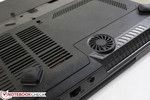
Sound quality is good and remains unchanged from other notebooks based on the same MSI shell. The dedicated subwoofer allows for deeper ranges - though not as deep as we would have liked - while the THX TrueStudio Pro software provides an easy-to-use interface when connecting 3.5 mm audio solutions into the notebook. Maximum volume is very loud with no major distortions in balance. For the occasional movie or music or even during extended play sessions, the internal speakers do a fantastic job.
Battery Life
The 7800 mAh, 87 Wh removable Li-Ion battery is the same as the battery module of the GX60 and older GT60. As a result, runtime comparisons between these similar, yet uniquely equipped notebooks can reveal a lot about the power savings between the various CPU and GPU models used.
Between the CZ-15, GX60 and GT60, not too large of a discrepancy in WLAN runtimes can be observed. All three notebooks are expected to last about 4.5 hours of constant use, though the AMD-powered GX60 may last for around half an hour longer on average. Most interesting is that the idling runtime of the CZ-15 is at least a few hours longer than those MSI notebooks mentioned. For example, whereas the GT60 with its Ivy Bridge and GTX 6xxM hardware can last for about 6 hours when idling, the CZ-15 can idle for around 9.5 hours. This may be partly attributed to the higher 1200 MHz idling clock rate of many Ivy Bridge processors versus just 800 MHz of idling Haswell processors in addition to other minor software and hardware optimizations.
In the end, the longer idling runtime should allow users to squeeze out more life from the CZ-15 by lowering system settings accordingly.
Verdict
The Valkyrie CZ-15 is a gaming DTR by the numbers. It offers very high performance with an attractive price due to the exclusion of a solid-state drive to keep costs low. Thus, users can configure with top of the line Haswell and Kepler options and still keep costs relatively minimal if they can make do with a slower 5400 RPM HDD. To gamers who may prefer high-end CPU and GPU performance for better mobile gaming instead of faster system performance such as on Ultrabooks, then the CZ-15 is an attractive option.
With that said, the 15.6-inch Valkyrie does not offer anything extraordinary, aside from its powerful core performance, of course. The added textures seem bland compared to the smooth finish of the 17.3-inch Valkyrie and there is still no support for mSATA drives. Maximum Turbo Boost is also unsustainable, unlike the Asus G750JW with the similar i7-4700HQ CPU. Users must also note that discrete GPU performance is severely reduced when running on batteries and so the notebook is expected to be close to an outlet if running intensive tasks. Even so, this is still a solid gamer-centric notebook without many of the eccentric details and LED colors that often embellish gaming DTRs.
| StarCraft II: Heart of the Swarm | |
| 1920x1080 Ultra / Extreme AA:on (sort by value) | |
| Ibuypower Valkyrie CZ-15 | |
| Ibuypower Valkyrie CZ 17 | |
| Asus G750JW | |
| 1366x768 High AA:on (sort by value) | |
| Ibuypower Valkyrie CZ-15 | |
| Ibuypower Valkyrie CZ 17 | |
| Asus G750JW | |
| 1366x768 Medium (sort by value) | |
| Ibuypower Valkyrie CZ 17 | |
| Asus G750JW | |
| Guild Wars 2 | |
| 1920x1080 All Maximum / On AA:FX (sort by value) | |
| Ibuypower Valkyrie CZ-15 | |
| Ibuypower Valkyrie CZ 17 | |
| MSI GT70H-80M4811B | |
| Asus G750JW | |
| 1366x768 Best Appearance Preset AA:FX (sort by value) | |
| Ibuypower Valkyrie CZ-15 | |
| Ibuypower Valkyrie CZ 17 | |
| Asus G750JW | |
| Deviltech Fire DT14 | |
| 1024x768 Best Performance Preset (sort by value) | |
| Deviltech Fire DT14 | |
| Sleeping Dogs | |
| 1920x1080 Extreme Preset AA:Extreme (sort by value) | |
| Ibuypower Valkyrie CZ-15 | |
| Ibuypower Valkyrie CZ 17 | |
| MSI GT70H-80M4811B | |
| Asus G750JW | |
| 1366x768 High Preset AA:High (sort by value) | |
| Ibuypower Valkyrie CZ-15 | |
| Ibuypower Valkyrie CZ 17 | |
| Asus G750JW | |
| 1366x768 Medium Preset AA:Normal (sort by value) | |
| Ibuypower Valkyrie CZ 17 | |
| Asus G750JW | |
| Tomb Raider | |
| 1920x1080 Ultra Preset AA:FX AF:16x (sort by value) | |
| Ibuypower Valkyrie CZ-15 | |
| Ibuypower Valkyrie CZ 17 | |
| MSI GT70H-80M4811B | |
| Asus G750JW | |
| 1366x768 High Preset AA:FX AF:8x (sort by value) | |
| Ibuypower Valkyrie CZ-15 | |
| Ibuypower Valkyrie CZ 17 | |
| Asus G750JW | |
| 1366x768 Normal Preset AA:FX AF:4x (sort by value) | |
| Ibuypower Valkyrie CZ 17 | |
| Asus G750JW | |
| BioShock Infinite | |
| 1920x1080 Ultra Preset, DX11 (DDOF) (sort by value) | |
| Ibuypower Valkyrie CZ-15 | |
| Ibuypower Valkyrie CZ 17 | |
| MSI GT70H-80M4811B | |
| Asus G750JW | |
| 1366x768 High Preset (sort by value) | |
| Ibuypower Valkyrie CZ-15 | |
| Ibuypower Valkyrie CZ 17 | |
| Asus G750JW | |
| 1366x768 Medium Preset (sort by value) | |
| Ibuypower Valkyrie CZ 17 | |
| Asus G750JW | |
| The Elder Scrolls V: Skyrim | |
| 1920x1080 Ultra Preset AA:8x AF:16x (sort by value) | |
| Ibuypower Valkyrie CZ-15 | |
| Ibuypower Valkyrie CZ 17 | |
| MSI GT70H-80M4811B | |
| Asus G750JW | |
| 1366x768 High Preset AA:8x AF:8x (sort by value) | |
| Ibuypower Valkyrie CZ-15 | |
| Ibuypower Valkyrie CZ 17 | |
| Asus G750JW | |
| 1366x768 Medium Preset AA:4x (sort by value) | |
| Ibuypower Valkyrie CZ 17 | |
| Asus G750JW | |
| Call of Duty: Black Ops 2 | |
| 1920x1080 (Extra) High / On, FXAA AA:4xMS (sort by value) | |
| Ibuypower Valkyrie CZ-15 | |
| Ibuypower Valkyrie CZ 17 | |
| MSI GT70H-80M4811B | |
| Asus G750JW | |
| 1366x768 High / On, FXAA AA:2xMS (sort by value) | |
| Ibuypower Valkyrie CZ-15 | |
| Ibuypower Valkyrie CZ 17 | |
| Asus G750JW | |
| Deviltech Fire DT14 | |
| 1366x768 Medium / Off (sort by value) | |
| Ibuypower Valkyrie CZ 17 | |
| Asus G750JW | |
| Deviltech Fire DT14 | |
| 1024x768 Low / Off (sort by value) | |
| Deviltech Fire DT14 | |


 Deutsch
Deutsch English
English Español
Español Français
Français Italiano
Italiano Nederlands
Nederlands Polski
Polski Português
Português Русский
Русский Türkçe
Türkçe Svenska
Svenska Chinese
Chinese Magyar
Magyar